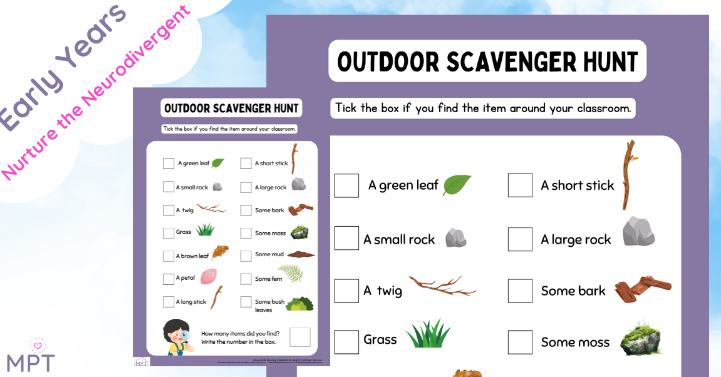What does this resource include? 1 x Powerpoint presentation for Year 3 animals including humans scheme of work ...
KS2: Perimeter (Outside in Autumn)
Oct 18, 2022
What does this resource include? 1 Instruction Video giving a lesson idea for taking perimeters outside using natural...
Rocks Scheme of Work (Year 3)
Oct 10, 2022
What does the fantastic Rocks Scheme of Work (Year 3) - include? 6 Lesson Plans for the Science Unit Year 3 Rocks 6...
Forest School Session Plan – Brilliant Bugs
Mar 28, 2022
Forest School the Muddy Way! Use some of our Forest School resources to help us do the work so you get to play! Use...
Forest School Rules Poster
Mar 28, 2022
We make Forest Schools easier for you by doing all the work for you so you can make more of the FUN! Use this poster...
Positional Language (Outdoors)
Mar 17, 2022
Exploring Positional Language Outdoors in EYFS Teaching positional language is a fundamental part of the Early Years...
Leaf Identifier KS2
Mar 16, 2022
Take time out to do some Muddy Science! This leaf identifier will help children find trees and identify them by their...
Muddy Spellings Test (Outdoor Game)
Mar 16, 2022
Is time for you to take your spellings outside? Muddy Spellings Test (Outdoor Game) is a must for all KS1 and KS2...
Outdoor Multiplication Posters (Nature Theme)
Mar 16, 2022
Our Muddy Materials and Posters are perfect for adding that educational element to your outside space as well as a...
Nature Sunflowers Art Task KS2
Mar 8, 2022
🌻 Nature Sunflowers Drawing: Mindfulness Activity for KS2 Bring a little sunshine and calm to your classroom with our...
Nature Colour In Mindfulness
Mar 8, 2022
Use this nature colour in activity to help connect children with nature while being mindful.
Nature Poems
Mar 8, 2022
Use Nature Poems Template to help take poetry outside using nature as inspiration.
Outdoor Wellbeing – Worry Leaves Template
Mar 8, 2022
Outdoor Wellbeing Ideas. Use this template to help children with worries and to help them share these and blow them...
Muddy Adjective Grid Game
Mar 8, 2022
Play the muddy adjective grid game to take this area of SPAG outside in the fresh air while having lots of fun!
Muddy Alphabet Grid Game
Mar 8, 2022
Play the Muddy Alphabet Grid Game to get children connecting with nature while linking in a lot of Science and...
1m Measure Venn Diagram
Mar 8, 2022
Use this 1m Measure Venn Diagramm to take your learning outside with the children.
Materials Venn Diagram (Man-made & Natural)
Mar 7, 2022
Outdoor Spanish Scavenger Hunt
Mar 7, 2022
Teaching Spanish Outdoors: Engaging Children in Language Learning Teaching Spanish outdoors can significantly enhance...





























